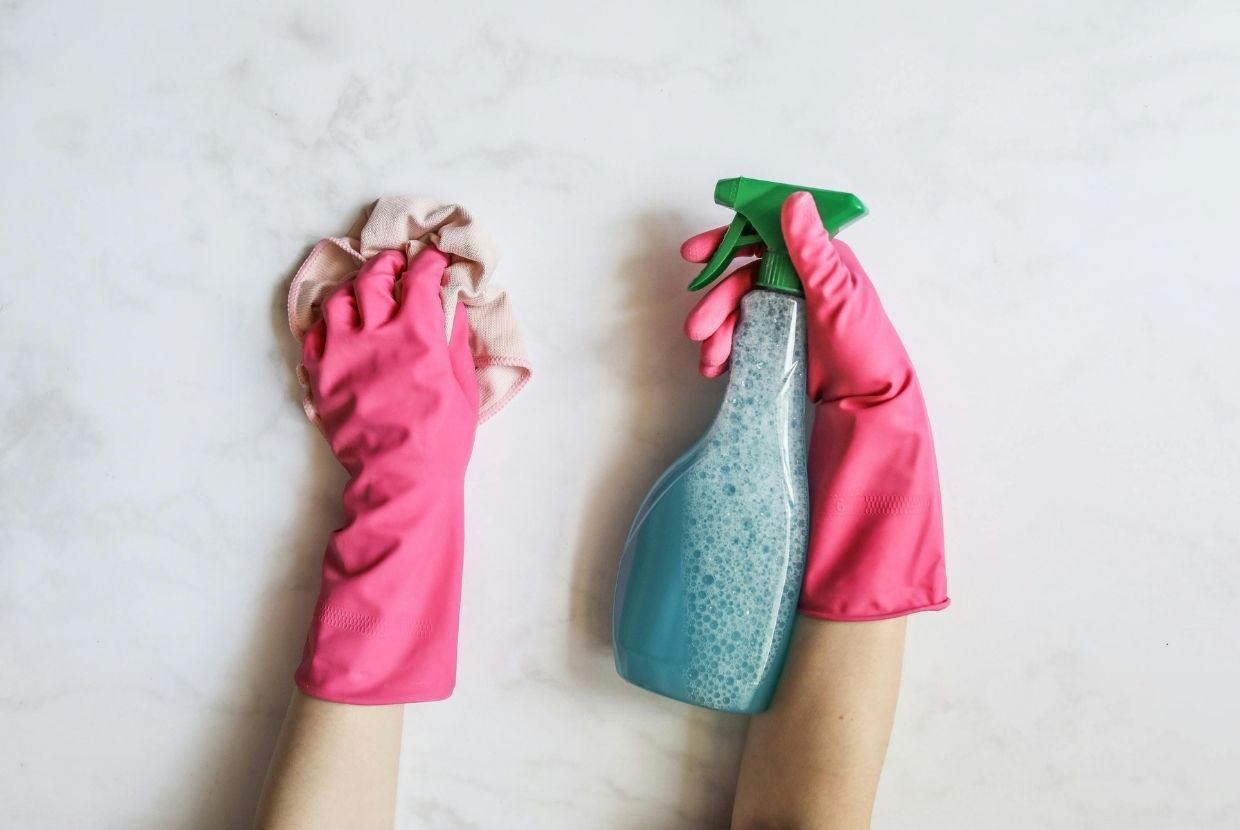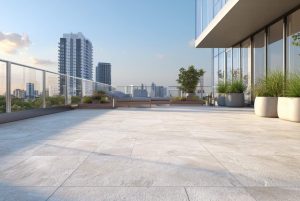Stains caused by etching—also known as hydrochloric acid—are one of those problems that can appear when you least expect it, and are as delicate as they are difficult to solve. Although it's a product often used for cleaning, the truth is that it's very aggressive and can leave permanent damage to various types of flooring if not handled carefully. Therefore, knowing how to remove etching stains from your floor isn't just useful: it can mean the difference between a floor that's permanently damaged and one that looks like new again.
What causes etching stains?
Etching chemically affects the minerals present in many floors, especially those containing calcium carbonate, such as marble, terrazzo, or limestone. The result? Whitish, opaque, sometimes rough stains that can't be removed with a mop or ordinary cleaning products. And on ceramic or porcelain floors, it can damage the enamel, leaving dull areas.
Understanding this reaction helps you anticipate and, above all, act wisely when it comes to correcting the damage.
Before you do anything: identify the type of floor
Not all pavements react the same to acid. In fact, there are very marked differences, and this greatly influences the treatment. So the first thing to know is what you're dealing with:
- Marble and travertine: very vulnerable to acid.
- Terrazzo: As a mixture of marble and cement, it is also greatly affected.
- Glazed ceramics and porcelain: They may lose their shine or change color.
- Polished cement and microcement: They often become white or rough to the touch.
This information will help you avoid making mistakes that could make the problem worse.
How to remove etching stains from marble floors
When the etching comes into contact with the marble, what happens is called etching, a kind of "etching" on the surface. You'll notice it because that area looks matte, with a whitish hue.
- Step 1: Neutralize. Always, the first thing is to apply baking soda with water to stop the action of the acid.
- If the damage is minor: There are home polishing kits specifically for marble that can help you restore shine in small areas.
- If the damage is deeper: The most effective method is mechanical polishing with diamond discs and subsequent buffing.
Here, more than a cleaning, what is needed is a recovery of the surface.
How to remove etching stains from terrazzo floors
Terrazzo combines marble and cement, so the action of the acid is doubly aggressive.
- Neutralize the area: Apply baking soda directly to the stain and rinse with plenty of water.
- In mild cases: A very superficial sanding can greatly improve the appearance.
- For severe stains: It is best to do a complete reduction, followed by a professional and crystallized polish that restores the shine and closes the pores of the material.
How to remove etching stains from porcelain or ceramic floors
These floors are more durable, but that doesn't mean they're invulnerable. Etching can dull the glaze or leave the surface uneven.
- If the acid is recent: It is best to use an alkaline cleaner formulated to remove construction residue and acidic products.
- If the enamel is already damaged: There's not much you can do with homemade products here. If the piece has lost its shine or color, the most viable option is usually to replace it with a new one.
How to remove etching stains from polished cement or microcement floors
This type of pavement is porous, and the acid opens those pores and leaves whitish stains.
- First step: baking soda with water to neutralize, followed by a good rinse.
- If the damage is superficial: You can try using sandpaper or fine diamond pads to even out the area.
- If it's more serious: It will be necessary to re-polish the entire surface and apply a specific protector for microcement again.
Here, more than cleaning, it's about giving the floor back its finishing coat.
Safety tips when working with etching
This product is not a toy. If you're going to use it, or if you need to treat an affected area, please take these steps:
- Wear protective gloves and eyewear, and ventilate the space well.
- Never mix it with bleach or ammonia (can generate dangerous gases).
- Always have baking soda on hand in case you need to neutralize quickly.
When to call in professionals
There are times when home remedies aren't enough, and forcing the situation can make things worse. For example:
- If the stain covers a very large area.
- If the floor has lost its overall shine.
- If the marble or terrazzo has visible engravings or depressions.
- If there are ceramic pieces that can no longer be recovered.
In all these cases, it's best to turn to a specialized service that knows how to remove etching stains from the floor without endangering the material.
At Projectes Sastre we are specialists in floor polishing in Mallorca
If your floor has been damaged by an acid attack and you're not sure how to remove etching stains, Projectes Sastre can help. We have the experience, specific tools, and knowledge necessary to restore all types of flooring: marble, terrazzo, microcement, granite, and more.
Our floor polishing service in Mallorca is designed to restore each surface's original shine, uniformity, and protection. If you need advice, we're here to help you get your floor back to the way you like it: clean, well-maintained, and stain-free.




